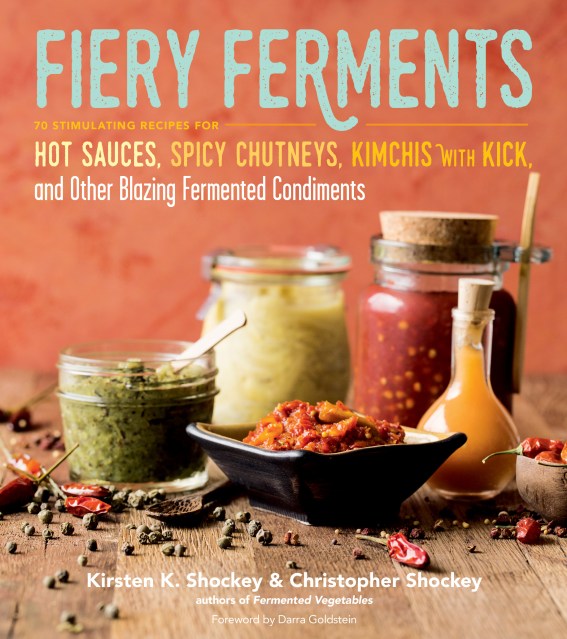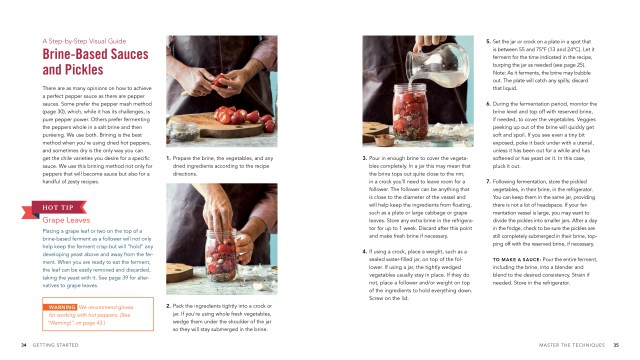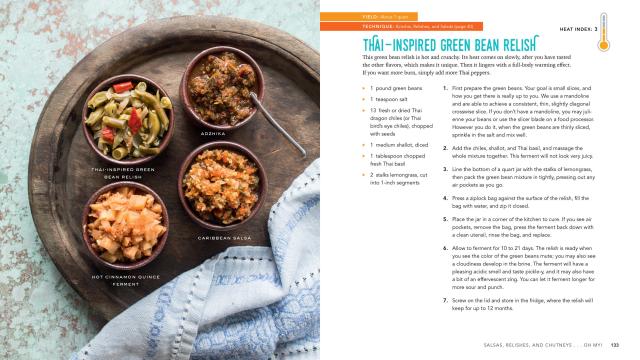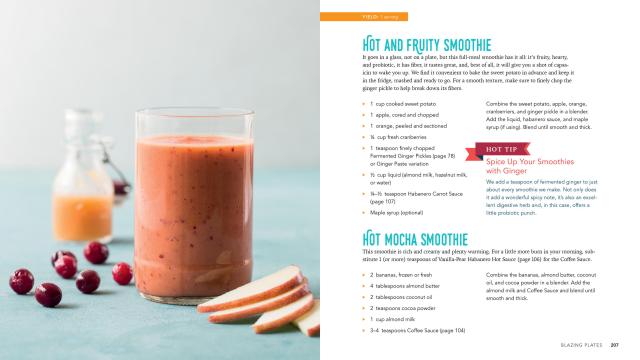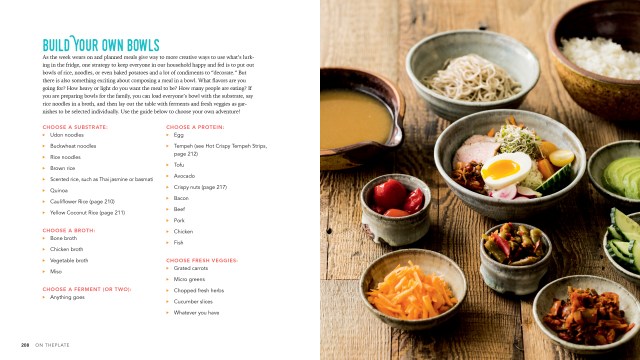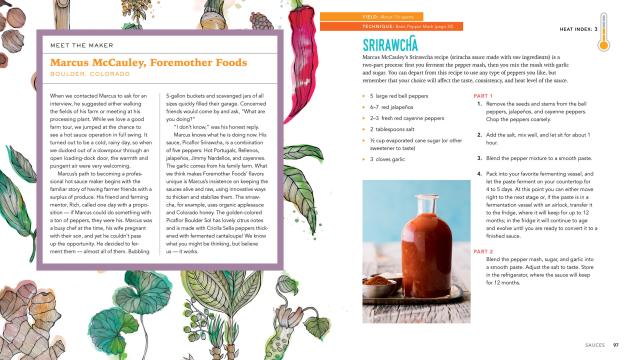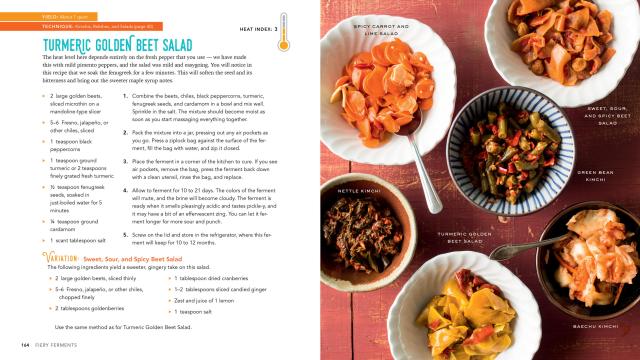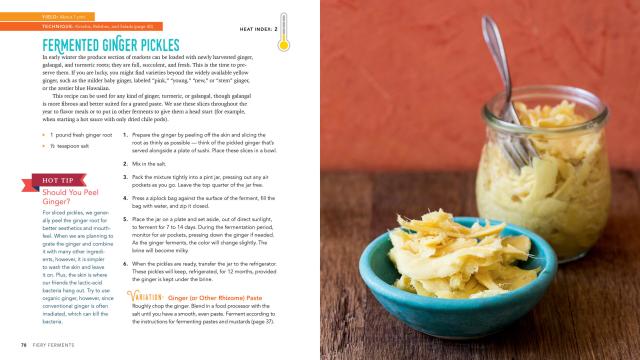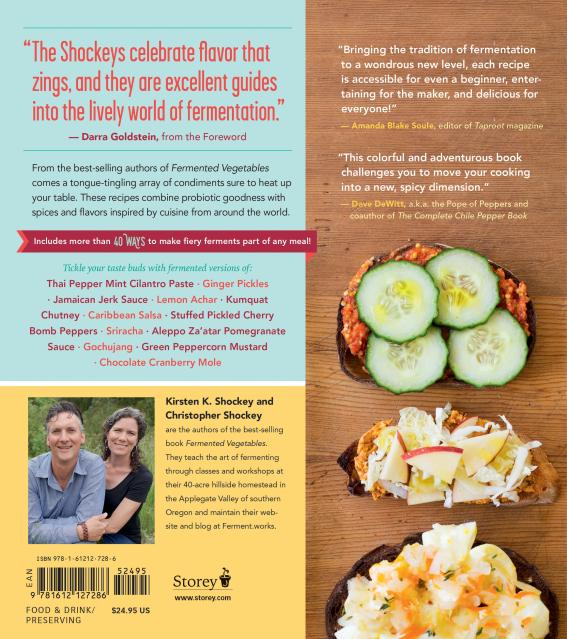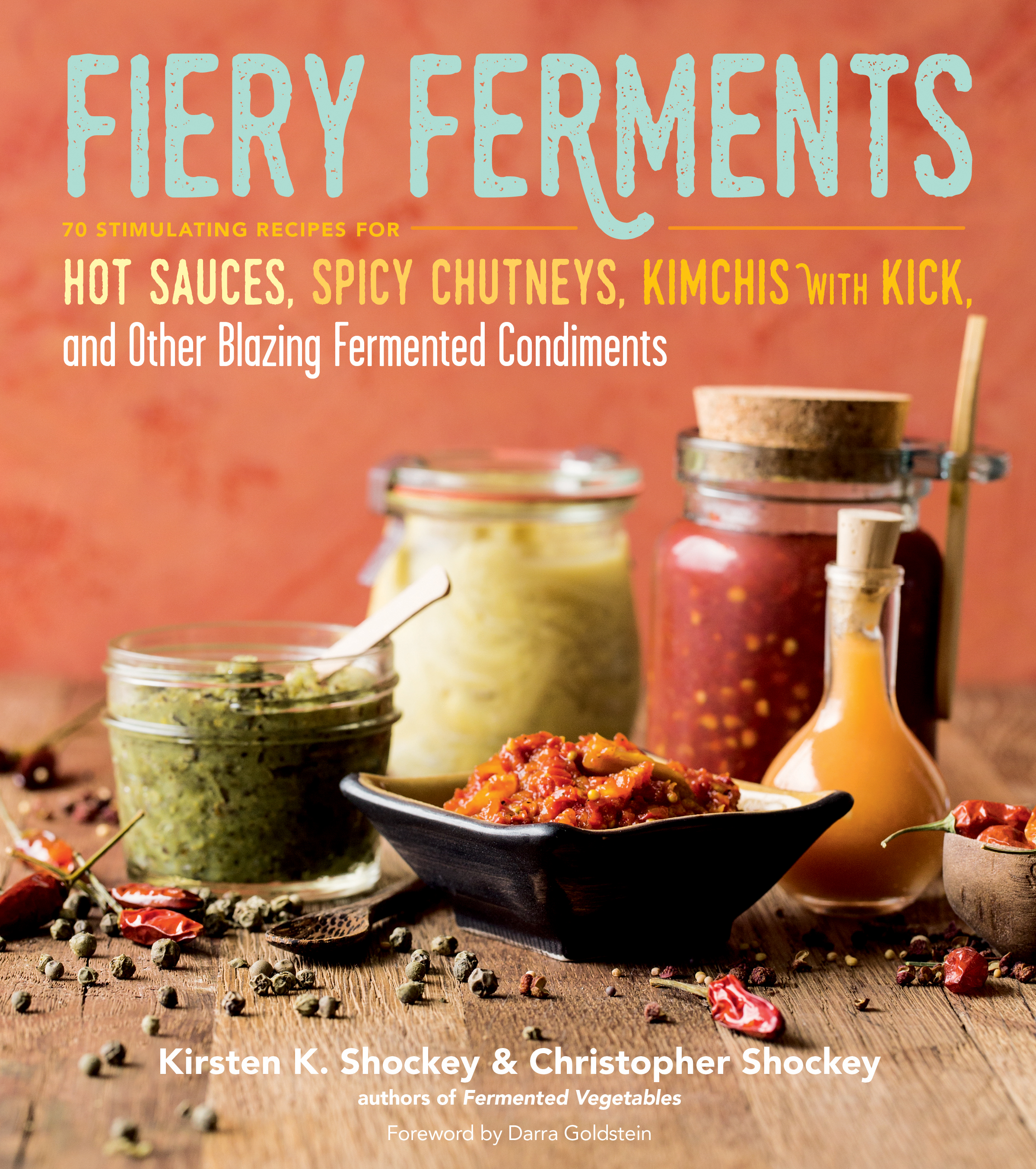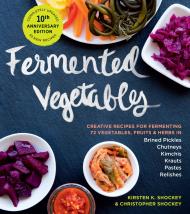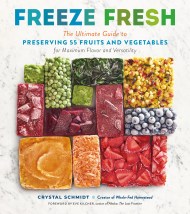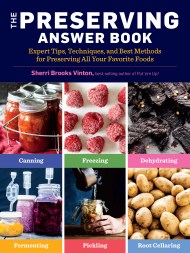Promotion
Use code MOM24 for 20% off site wide + free shipping over $45
Fiery Ferments
70 Stimulating Recipes for Hot Sauces, Spicy Chutneys, Kimchis with Kick, and Other Blazing Fermented Condiments
Contributors
Foreword by Darra Goldstein
Formats and Prices
Price
$24.95Price
$33.95 CADFormat
Format:
- Trade Paperback $24.95 $33.95 CAD
- ebook $12.99 $16.99 CAD
This item is a preorder. Your payment method will be charged immediately, and the product is expected to ship on or around May 30, 2017. This date is subject to change due to shipping delays beyond our control.
Also available from:
The authors of the best-selling Fermented Vegetables are back, and this time they’ve brought the heat with them. Whet your appetite with more than 60 recipes for hot sauces, mustards, pickles, chutneys, relishes, and kimchis from around the globe. Chiles take the spotlight, with recipes such as Thai Pepper Mint Cilantro Paste, Aleppo Za’atar Pomegranate Sauce, and Mango Plantain Habañero Ferment, but other traditional spices like horseradish, ginger, and peppercorns also make cameo appearances. Dozens of additional recipes for breakfast foods, snacks, entrées, and beverages highlight the many uses for hot ferments.
Genre:
-
“This guide to creating your own lively ferments brings the tradition of fermentation to a wondrous new level. Each recipe is accessible for even a beginner, entertaining for the maker, and — most especially — delicious for everyone!”
— Amanda Blake Soule, editor of Taproot magazine
“This colorful and adventurous book challenges you to move your cooking in a new, spicy dimension.”
— Dave DeWitt, a.k.a. the Pope of Peppers, and co-author of The Complete Chile Pepper Book
“Kirsten and Christopher’s compendium of spicy ferments and methods taught me so much about hot stuff. I can’t wait to share this fabulous resource with those who love turning up the heat.”
— Kate Payne, author of Hip Girl’s Guide books and blogger
"Fiery Ferments expertly marries spicy with probiotics. The 70 recipes include both traditional and modern takes, and each comes with its own heat index so you know just what kind of fiery ride you’re in for."
— Ashley English, author of Handmade Gatherings and A Year of Pies
“A must-have for home chefs who adore the wonders of fermentation and believe any dish is elevated by a dose of heat.” — Tara Whitsitt, founder of Fermentation on Wheels
“A worthy, warm, and delicious marriage of fermented and spicy! Like a good hot sauce, its components are in perfect balance: intriguing history and context, practical how-tos, thoroughly researched tips, and inspiring recipes.” — Alex Lewin, author of Real Food Fermentation
- On Sale
- May 30, 2017
- Page Count
- 272 pages
- Publisher
- Storey
- ISBN-13
- 9781612127286
Newsletter Signup
By clicking ‘Sign Up,’ I acknowledge that I have read and agree to Hachette Book Group’s Privacy Policy and Terms of Use
